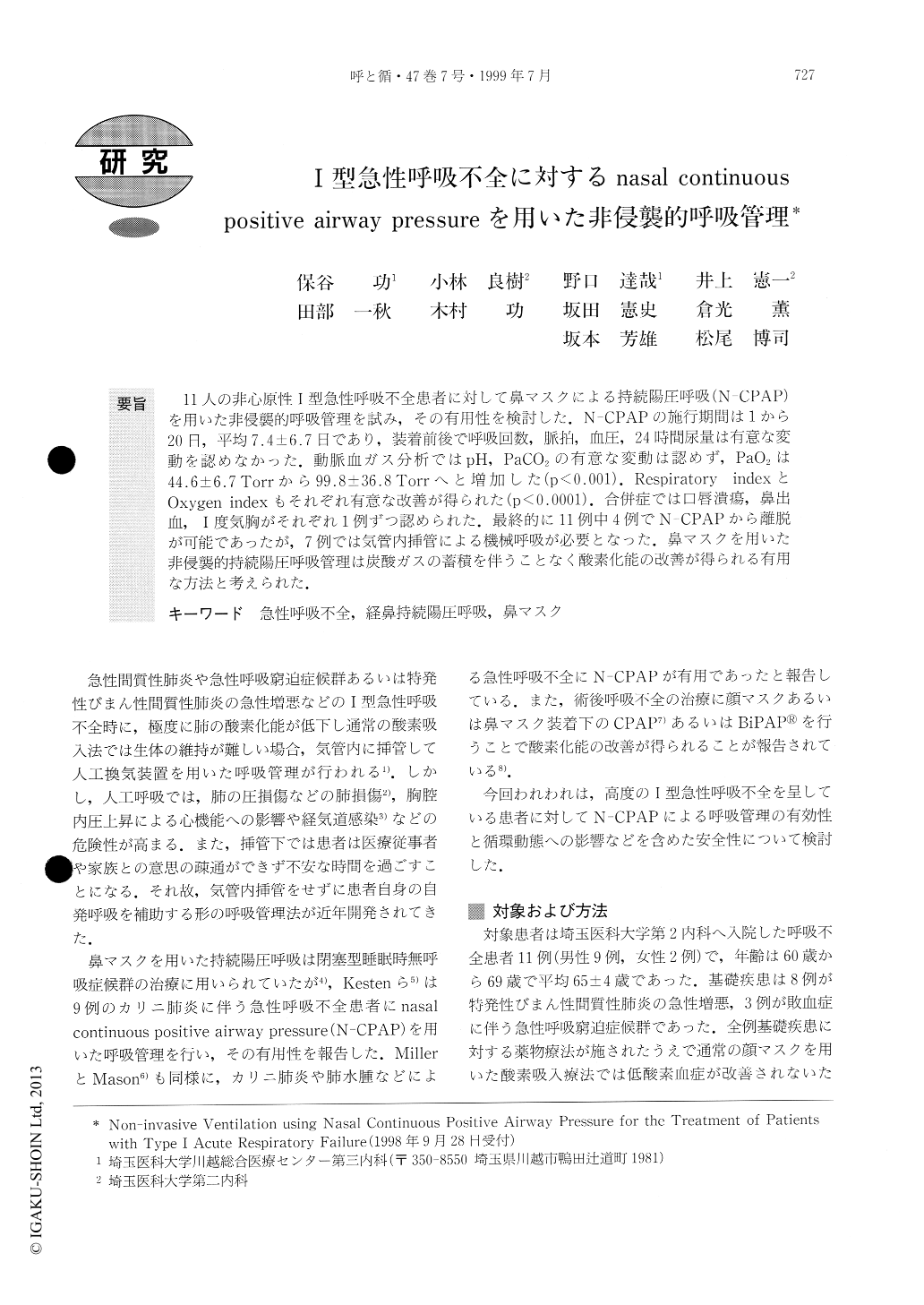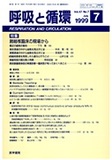Japanese
English
- 有料閲覧
- Abstract 文献概要
- 1ページ目 Look Inside
11人の非心原性I型急性呼吸不全患者に対して鼻マスクによる持続陽圧呼吸(N-CPAP)を用いた非侵襲的呼吸管理を試み,その有用性を検討した.N-CPAPの施行期間は1から20日,平均7.4±6.7日であり,装着前後で呼吸回数,脈拍,血圧,24時間尿量は有意な変動を認めなかった.動脈血ガス分析ではpH,PaCO2の有意な変動は認めず,PaO2は44.6±6.7Torrから99.8±36.8Torrへと増加たた(p<0.001).Respiratory indexとOxygen indexもそれぞれ有意な改善が得られた(p<0.0001).合併症では口唇潰瘍,鼻出血,I度気胸がそれぞれ1例ずつ認められた.最終的に11例中4例でN-CPAPから離脱が可能であったが,7例では気管内挿管による機械呼吸が必要となった.鼻マスクを用いた非侵襲的持続陽圧呼吸管理は炭酸ガスの蓄積を伴うことなく酸素化能の改善が得られる有用な方法と考えられた.
The efficacy of non-invasive ventilation using nasal continuous positive airway pressure through a nasal mask (N-CPAP) was examined in 11 patients with non-cardiogenic type I acute respiratory failure. N-CPAP was used for 1 to 20 (7.4±6.7) days, but there was no significant change in respiratory rate, heart rate, blood pressure and urine volume after N-CPAP therapy. Arterial blood gas analysis showed no significant change in pH and PaCO2. Meanwhile, PaO2, significantly rose from 49.6 ± 9.4 Torr to 99.8±36.8 Torr (p<0.001). Respiratory index and oxygen index also improved significantly (p<0.0001). As complications, there was oral ulcer in one patient, nasal bleeding in one and pneumothorax in another. Due to the N-CPAP, four out of 11 patients finally recovered from acute respiratory failure, others subsequently required mechanical ventilation. We conclude that nasal positive airway pressure ventilation with use of a nasal mask is an effective method to improve oxygenation without CO2, retention.

Copyright © 1999, Igaku-Shoin Ltd. All rights reserved.


